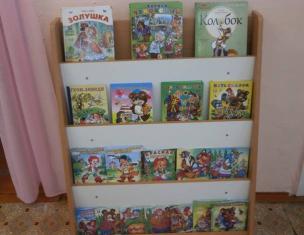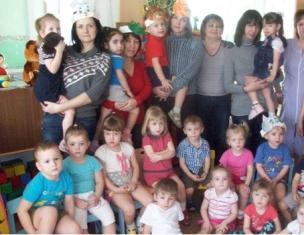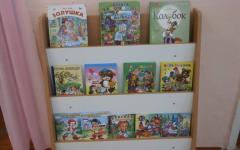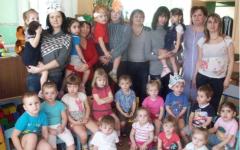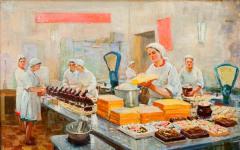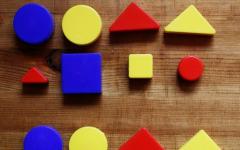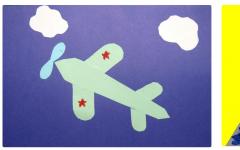The ability to see a miracle in everyday subjects is distinguished by genius from other people. A creative beginning is formed in early childhood, when the kid inquisitively studies the world around. Scientific experiments, including experiments with water, is an easy way to interest the child with natural sciences and a great type of family leisure.
From this article you will learn
What is good water for home experiences
Water is an ideal substance for acquaintance with the physical properties of objects. The advantages of our usual substance are:
- availability and low cost;
- the ability to stay in three states: solid, vapor and liquid;
- the ability to easily dissolve various substances;
- water transparency provides visibility of experience: the baby will be able to explain the result of the study;
- safety and non-toxicity of substances required for experiments: a child can touch all that interest him;
- no additional tools and equipment, special skills and knowledge;
- you can conduct research both at home and in kindergarten.
The complexity of the experiments has depends on the age of the child and the level of his knowledge. Start experiments with water for children are better with the simplest manipulations, in the older group of Dow or at home.
Experiments for kids (4-6 years old)
All small children like the process of transfusion and mixing liquids of different color. The first classes can be devoted to acquaintance with the organoleptic properties of the substance: taste, smell, color.
Children of the preparatory group can be asked than mineral water and maritime diffuse. In the garden, research results can not be proved and explaining what is happening available to the words.
Experience transparency
You will need two transparent cups: one with water, the other - with opaque liquid, such as tomato juice, milk, cocktail tubes or spoons. In each container, immerse items and ask the kids, in which of the cups the tube is visible, and in what - no? Why? What substance is transparent, and what is impermeable?
Sink is not sinking
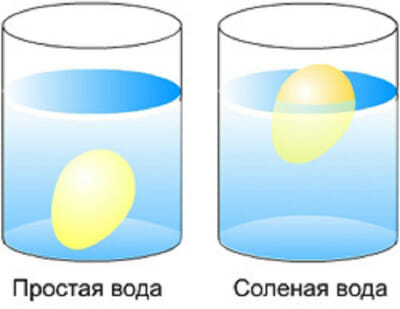
You need to cook two glasses with water, salt and raw fresh egg. Add salt to one of the glasses at the rate of two tablespoons per cup. If you drop the egg into the clean liquid, it drops to the bottom, and if it is in the salty - it turns out to be on the surface of the water. The child will have the concept of the density of the substance. If you take a large container and gradually add fresh water into a salty, the egg will be gradually sinking.
Freeze
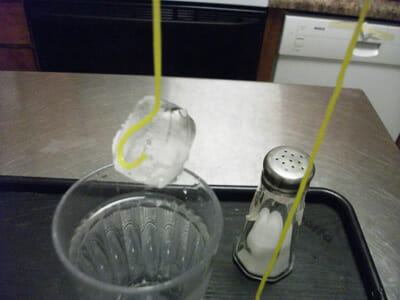
At the initial stage, it will be enough to pour water into a mold together with the child and send to the freezer. You can watch together behind the melting process of the ice cube, speed up the process, touches it with your fingers.
Then complicate the experiment: put a thick thread on the ice cube, sprinkle the surface of the salt. After a few moments, everything grabbed together, and the cube can be raised by the thread up.
An exciting spectacle is melting cubes of colored ice placed in a transparent container with vegetable oil (you can take a child). The water drops fall at the bottom form a bizarre pattern, which is constantly changing.
Couples - this is also water
For experiment, water must be boiled. Pay attention to the children how steam rises above the surface. Hold over a container with hot liquid, for example, a thermos, a mirror or a glass saucer. Show how the droplets flow from it. Take the output: if you heat the water, it will turn into steam, when cooling it will switch to a liquid state.
"Conspiracy"
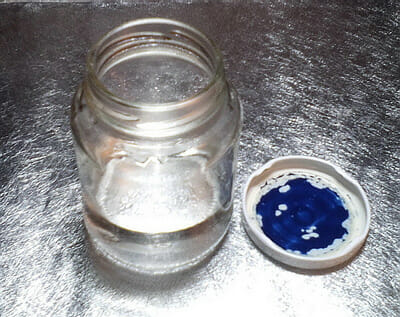
This is not an experience, but rather focus. Before the start of the experiment, ask kids whether water in a closed capacity can change the color from the magic spell. In the eyes of children, say the conspiracy, shake the jar, and the colorless liquid will become color.
The secret is that water-soluble paint, watercolor or gouache is applied to the capacitance cover. At the time of shaking, the water washes off the paint layer and changes the color. The main thing is not to rotate the inside of the cover to the audience.
Broken pencil
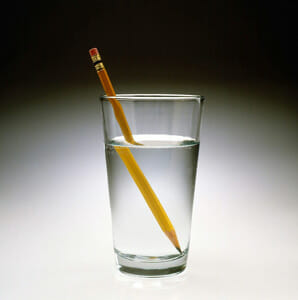
The simplest experience showing the refraction of the image in the liquid is the room of the tube or pencil into a transparent glass filled with water. The part of the product immersed in the liquid will seem deformed, why the pencil looks broken.
The optical properties of water can be checked in this way: take two eggs the same in size and immerse one of them into the water. One will seem more than the second.
Expansion during freezing
Take plastic tubules for a cocktail, clamp one end with plasticine, fill with water to the edges and block. Place the tube in the freezer. After some time, pay attention to the baby that the liquid, freezing, expanded and displaced the plasticine plugs. Tell that water can break the container if it is influenced by low temperatures.
Dry Nappet.

Place a dry paper napkin on the bottom of the empty glass. Turn it over and lower it vertically in the pelvis with water edges down to the bottom. Do not allow liquid inward, holding a glass of power. Also in the vertical direction, get a glass of water.
If everything is done correctly, the paper in the glass will not wet, this will prevent this air pressure. Tell the children a story about a diving bell, with which people can descend to the bottom of the reservoir.
Submarine
In a glass, filled with water, omit the tube, bend it in the lower third. Immerse the glass completely up the bottom in the tank with water so that the tube is on the surface. I blow into it, the air instantly fills the glass, it jumps out of the water and turns over.
You can tell the children that the fish use this technique: to immerse themselves on the bottom, compress the muscles of the air bubble, and the part of the air comes out of it. To climb the surface, pumped up air and pop up.
Rotation of bucket
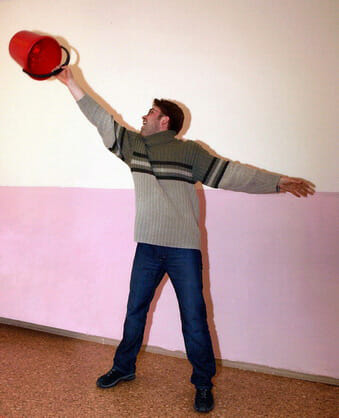
To carry out this experience, it is desirable to call for help dad. The procedure for the following: A durable bucket is taken with a strong handle and filled with water to half. Selects the place is more good, it is advisable to spend experience in nature. The bucket must be taken by the handle and rotate quickly so that the water is not shed. When the experiment is over, you can watch the splashes spraying from the bucket.
If the child is adult enough, explain to him that the liquid is held due to centrifugal strength. It is possible to experience its action on attractions, the principle of operation of which is based on a circular motion.
Disappearing coin
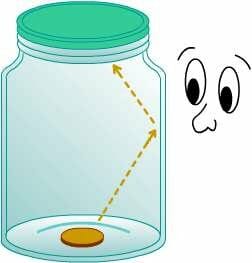
To demonstrate this experience, pour into a liter jar of water and close the lid. Get the coin and give her to the baby to make it make sure that she is the most ordinary. Let the child put it on the table, and you put the jar on top. Ask the baby, whether he sees money. Remove the container, and the coin will be visible again.
Floating clip
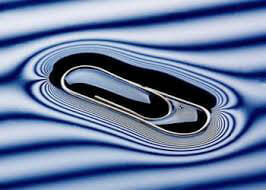
Before starting experience, ask the child if metal objects are tight in the water. If it finds it difficult to answer, throw the paper clinch vertically. She will plunge on the bottom. Tell the baby that you know the magic spell so that the clip is not tone. With a flat hook, bent from the second instance, slowly and gently place the horizontally located clips on the water surface.
In order for the product it is absolutely not immersed to the bottom, pre-soda in its candle. Focus can be carried out thanks to the property of water, which is called surface tension.
Unpatient glass
For another experiment based on the properties of the surface tension of water, you will need:
- transparent smooth glass glass;
- handful of small metal objects: nuts, washers, coins;
- oil, mineral or vegetable;
- chilled water.
Before conducting experience, it is necessary to lubricate the edge of the edge of a pure dry cup. Fill it with water and put metal items one by one. The water surface will cease to be flat and start towering above the edges of the glass. At some point, the film on the surface is bursting, and the liquid is shed. Oil in this experience is needed to reduce the water and surface of the glass.
Flowers on water
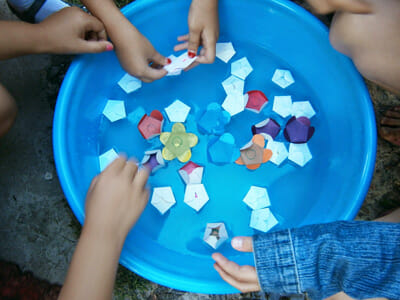
Required materials and tools:
- paper of different density and color, cardboard;
- scissors;
- glue;
- wide water tank: pelvis, deep tray, dish.
Preparatory stage - Production of colors. Cut the paper into squares with a side of 15 centimeters. Fold each of them in half and once again twice. Arbitrarily cut the petals. Bend them in half to make the petals formed bud. Lower every flower into cooked water.
Gradually, the flowers will begin to open. The rate of dissolution will depend on the density of the paper. Petals are straightened due to swelling of the fibers of the material.
Searches for treasures
Collect small toys, coins, beads and freeze them in one or more pieces of ice. The essence of the game is that as it is thawing, items will appear on the surface. To speed up the process, you can use kitchen accessories and various tools: forks, tweezers, a knife with a safe blade. If there are several children, you can arrange a competition.
All absorbed
Experience introduces a child with the ability of objects to absorb liquids. To hold it, take a sponge and plate with water. Immerse a sponge into a plate and watch with a child like water rises up and the sponge becomes wet. Experiment with various objects, some have the ability to absorb liquids, and some - no.
Ice cubes

Children love to freeze water. Experiment with them with forms and color: kids will be convinced that the liquid repeats the form of the container into which it is placed. Freeze the painted water with cubes, pre-insert the toothpick or tube into each.
From the freezer you will get a lot of multicolored boats. Put paper sails and lower the boats into the water. The ice will begin to melting, forming bizarre colored divorces: this is manifested by diffusion of liquid.
Experiments with water of different temperatures
Stages and process conditions:
- Prepare four identical glass glasses, watercolor paints or food dyes.
- Two glasses pour cold water, two - warm.
- Warm water in black color, and cold - in yellow.
- Put a glass with cold water to a plate, a container with a warm black liquid, cover the card from plastic, turn over and put so that the glasses are set to symmetrically.
- Carefully pull out the card, try not to shift the glasses.
- Cold and warm water are not mixed thanks to the properties of physics.
Repeat the experiment, but this time down put a glass with hot water.
All experiments in a kindergarten spend in a game form.
Experiments for schoolchildren
Focuses with water for schoolchildren need to be explained in the initial class, acquaintance with the simplest scientific concepts, then the young magician easily will lose weight in the 8-11th grade and physics, and chemistry.
Colored layers
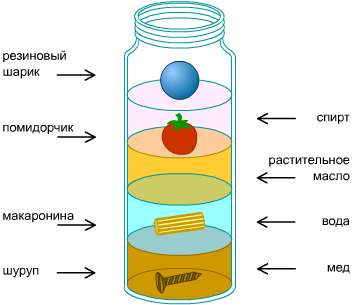
Take the plastic bottle, the third fill it with vegetable oil, one third is water, and leave another third empty. Pour in a bottle of food dye and block it with a lid. The child can make sure that the oil is lighter than air, and water is harder.
The oil will remain unchanged, and the water is painted. If you shake the bottle, the layers will be shown, but after a few moments everything will become, as it was. When placing a container in the freezer layer, the oil layer drops down, and the water will freeze from above.
Swelto-Nonolevika
Everyone knows that water in solicit do not hold. Show your child focus: Lubricate the sieve with oil and shake. Carefully pour some water along the inner edge of the sieve. Water will not flow out, as the oil film will hold it. But if you spend the finger along the bottom, it will collapse, and the fluid is flowing.
Experiment with glycerin
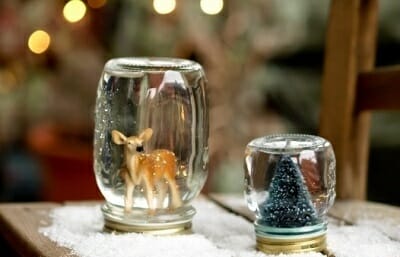
Experience can be held on the eve of the new year. Take a jar with a screw cover, a small plastic toy, sequins, glue and glycerin. Stick toy, Christmas tree, snowman to the inside of the cover.
Pour into the water bank, add sparkles and glycerol. Tightly close the lid with the figure inside and turn the container. Thanks to the glycerin, the sequins will be beautifully spinning around the figure, if regularly turn the design. A jar can be presented as a gift.
Making a cloud
This is rather an ecological experiment. If the child needs you, from which clouds are made, with it such experience with water. In a 3-liter jar, pour hot water, about 2.5 centimeters. Put on a saucer or bastard of ice pieces and put on the jar so that the neck is completely closed.
Soon inside the capacitance forms a cloud of fog (pair). You can draw the attention of the preschooler to condensate and explain why it rains.
Tornado
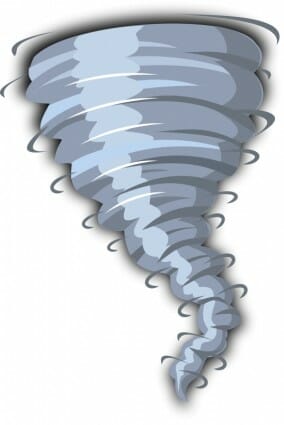
Often both children and adults are interested in how an atmospheric phenomenon is formed as a tornado. Together with children, you can answer this question by setting up the next experiment with water, which consists in the following steps:
- Prepare two plastic bottles of 2 liters, tape, metal washer with a diameter of 2.5.
- Fill one of the bottles of water and put on the neck of the washer.
- To turn the second bottle, put on the first and tightly rewind the upper part of both bottles of scotch, so that water does not pour out.
- Turn over the design so that the water bottle is on top.
- Arrange a hurricane: start rotating the device on the helix. The flowing handle turn into a mini-tornado.
- Watch the process occurring in bottles.
Tornado can be arranged in a bank. To do this, fill it with water, not reaching the edges for 4-5 centimeters, add a means for washing dishes. Tightly close the lid and shake the jar.
Rainbow
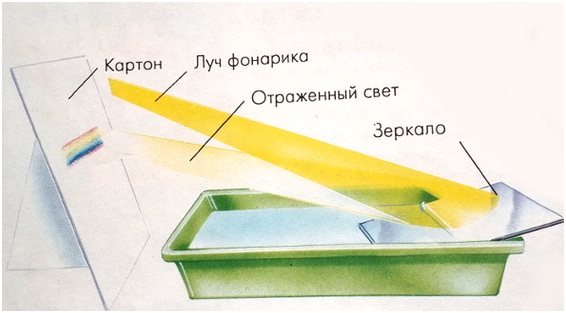
It is possible to explain the origin of the rainbow as follows. In the sun room, install a wide container with water, next to the sheet of white paper. Lower the mirror into the container, catch them a sunbeam, direct it towards the sheet so that the spectrum appears. You can use a flashlight.
Lord of matches
Pour water into the plate and let go on the surface of the match. Lower a piece of sugar or soap into the water: in the first case, the matches will gather around a piece, in the second - they will sail from it. This is because sugar increases the strength of the surface tension of water, and soap reduces.
Water flows up
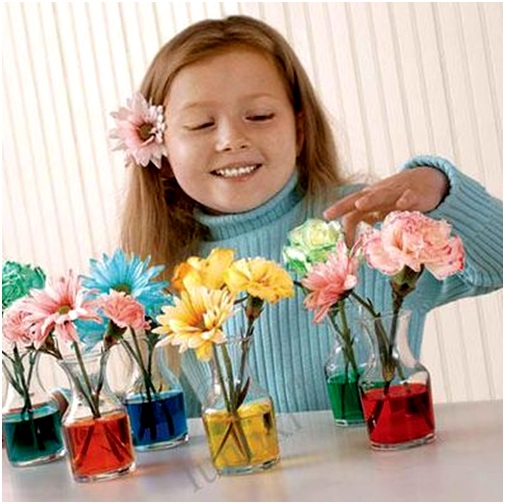
Place in the container with a tints with food dye with water white flowers, it is better to take carnations or pale green plants, for example celery. After some time, the flowers will change color. You can proceed easier: use in experience with water not flowers, but white paper napkins.
An interesting effect will turn out if one edge of the towel is placed in the water of a certain color, and the other - to another, contrasting shade.
Water from the air
HOME Fascinating Experience shows how the condensation process occurs. To perform it, take a glass jar, fill it with ice cubes, pour the salt spoon, shake several times and close the lid. After 10 minutes, water droplets will appear on the outer surface of the bank.
For clarity, wrap it with a paper towel and make sure the water is enough. Tell the child where in nature you can see the process of condensation of water: for example, on cold stones under the sun.
Paper cover
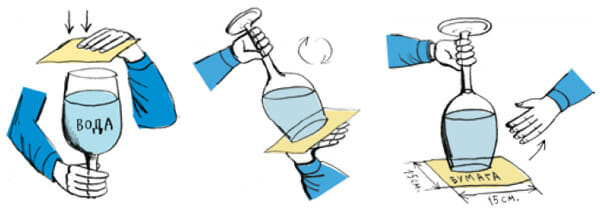
If you flip a glass with water, it will turn out. Or maybe a sheet of paper to keep water? To answer the question, cut a flat cover from thick paper, exceeding the diameter of the edges of the glass by 2-3 centimeters.
Fill the glass with water to about half, place the paper sheet from above and gently turn it out. Due to air pressure, the liquid should remain in the container.
Thanks to this joke, the student can earn popularity among classmates.
Soaping volcano
It will take: detergent, soda, vinegar, cardboard for "volcano", iodine. Pour water in a glass, vinegar, dishwashing agent and a few drops of iodine or other dye. Make a cone from dark cardboard and wrap the container with the ingredients so that the edges come into contact. Pass into the glass soda, the volcano will start erupting.
Candle pump
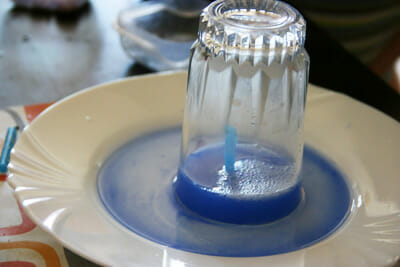
This entertaining focus with water demonstrates the force of the law of gravity. Take a small candle, install it on the saucer and burn. Pour a slide of a little tinted water. Cover the candle with a glass, gradually the liquid will stretch inside. Explanation in changing the pressure inside the container.
Growing crystals
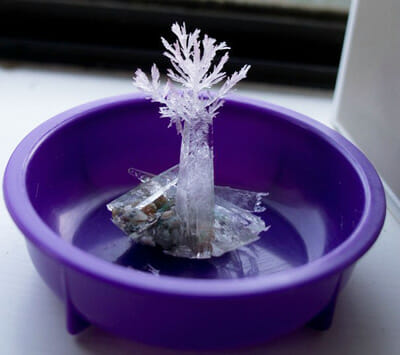
The result of this experience will be obtaining beautiful crystals on the surface of the wire. For their cultivation, a strong salt solution is needed. It was possible to determine whether the saturated solution turned out to be enough, by adding a new portion of salt. If it is no longer dissolved, the solution is ready. The cleaner water, the better.
To clean the solution from garbage, break it into another container. Lower the wire from the loop at the end and put everything in a warm place. To obtain patterned craft, twist the wire required. A few days later, the wire is becoming saint "snow".
Dancing coin
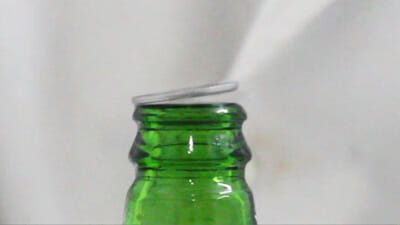
We need a glass bottle, coin and water. Place the empty bottle without a cover for 10 minutes in the freezer. Water moistened coin, put the bottle on the neck. In less than a minute, cold air from heating will expand and starts out the coin, causing it to jump on the surface.
Magic Ball
Tools and materials: vinegar, food soda, lemon, glass, air balloon, bottle, tape and funnel.
Process course:
- Pour water into a bottle, pour a teaspoon of soda.
- Mix three tablespoons of vinegar and lemon juice.
- Quickly pour the mixture into a bottle of water through a funnel and put on the ball on the neck of the bottle with a mixture of water and soda. The reaction will occur instantly: the composition will begin to "boil" and the ball is inflated, as air is turned out.
So that the air from the bottle falls only into the ball, clog the neck with a tape.
Balls in a skillet
If there is some water to pour out a hot surface, it will disappear (evaporation). When adding another portion, the balls resembling mercury are formed on the pan.
Burning liquid
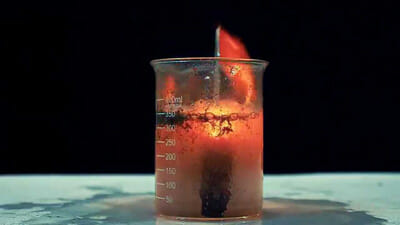
Clay the working surface of the Bengal sticks with scotch, leaving the tips, google and lower the water vessel into the transparent vessel. The sticks will not go out, thanks to their chemical composition in the water, their fire burns even brighter, creating the effect of flaming fluid.
Water control
Sound force is another means of changing the direction of fluid flow. The result can be observed using a powerful speaker. Under the influence of music or other sound effects, water takes a bizarre fantastic shape, forming foam and mini-fountains.
Rainbow Water
The cognitive experiment is based on changing the density of water. For the process take four small cups with water, dyes, syringe and sugar sand.
Add a dye to the first cup and leave for a while. In the remaining solvent sequentially 1, 2 and 3 teaspoons of sugar and dyes of different colors. In a transparent glass, a syringe poured a wicked liquid. Then the water with a syringe is neatly produced, where 0.5 teaspoon of sugar is added.
The third and fourth step: a solution with an average and maximum concentration is available in the same way: closer to the bottom. If everything is done correctly, there will be water in the glass with multi-colored layers.
Colorful lamp
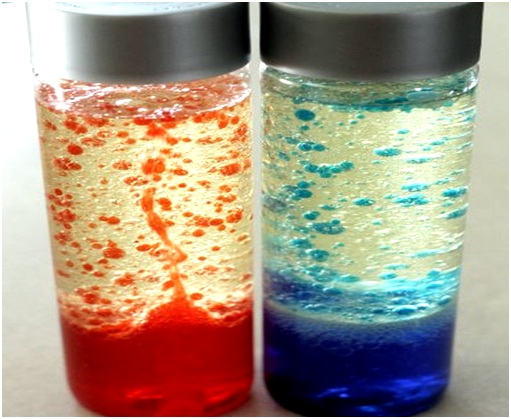
A steep experience causes delight not only in children is 5-6 years old, but also from younger schoolchildren, and in adolescents. In a glass or plastic bottle, water and sunflower oil is poured in equal parts, the dye falls asleep. Runs the process of hip aspirin's tablet lowered into the water. The effect will increase, if you carry out this experience in a dark room, providing backlight using a flashlight.
Ice Education
For the trick you will need a plastic bottle with a capacity of 0.5 liters, filled with distilled water without gas, and the freezer. Place the container in the freezer, after 2 hours, get it and sharply hit the hard surface.
Water in the eyes will begin to turn into ice. An experiment is explained by the composition of distilled water: it does not have centers responsible for crystallization. After impact, bubbles appear in the liquid, and the freezing process is started.
This is not all manipulations carried out with water. Before unrecognizable, its properties change such substances such as starch, clay, shampoo. Almost all experiments, children of 6-7 years can well be made themselves in the kitchen or experiment under the supervision of parents, looking at the video tutorial or explaining pictures.
Even steep experiments are shown in this video.
If necessary, you need to offer consultation or assistance to a small chemist. It is even better to spend all research together: even adults will open for themselves a lot of amazing properties of water.
IMPORTANT! * When copying materials to the article, be sure to specify an active reference to the first


